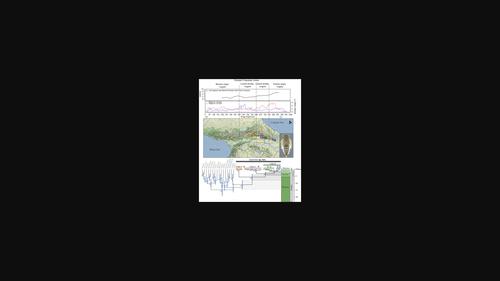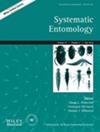Diversification in Caucasian Epeorus (Caucasiron) mayflies (Ephemeroptera: Heptageniidae) follows topographic deformation along the Greater Caucasus range
IF 4.7
1区 农林科学
Q1 ENTOMOLOGY
引用次数: 2
Abstract
The evolution and distribution of mountain biota are closely linked with mountain formation and topographic complexity. Here we explore the diversification of cold‐tolerant mayflies of the subgenus Epeorus (Caucasiron) in the south‐eastern Greater Caucasus, an area of dynamic changes in topography since the Miocene, driven by the convergence of the Greater and Lesser Caucasus. We hypothesized that orogenic processes promoted the diversification of E. (Caucasiron) and that the resultant diversification pattern followed the timing and progress of mountain formation along the range. A new evolutionary lineage of E. (Caucasiron) distributed in the central‐eastern Greater Caucasus was found and described as Epeorus (Caucasiron) tripertitus sp.n. It consists of three clades clearly differentiated based on mitochondrial sequence data, but indistinguishable by morphological traits. Based on a time‐calibrated phylogeny using mitochondrial (COI, 16S) and nuclear (EF, wg, 28S) markers, we found that a gradual allopatric diversification of the ancestral population of E. (C.) tripertitus sp.n. dated to a period lasting from the late Miocene to the Pleistocene spread eastward along the range. This pattern corresponded with the process of topographic deformation which started in the central part of the range in the Miocene and progressed to the east during the Pliocene/Pleistocene. The results implied the dominant role of mountain building on the biotic diversification of this region and continuing recent speciation in the south‐eastern part of the mountains.

高加索Epeorus(Caucasiron)mayflies(蜉蝣目:七叶树科)的多样性遵循大高加索山脉的地形变形
山地生物群的演化和分布与山地的形成和地形的复杂性密切相关。在这里,我们探索了大高加索东南部Epeorus亚属(Caucasiron)耐冷果蝇的多样性,这是一个自中新世以来地形动态变化的地区,受大高加索和小高加索交汇的驱动。我们假设造山过程促进了E.(Caucasiron)的多样化,并且由此产生的多样化模式遵循了山脉沿线山脉形成的时间和进程。分布在大高加索中东部的E.(Caucasiron)的一个新进化谱系被发现并描述为Epeorus(Caucisiron)tripertitus sp.n。它由三个分支组成,根据线粒体序列数据可以清楚地区分,但无法通过形态特征区分。基于使用线粒体(COI,16S)和细胞核(EF,wg,28S)标记进行的时间校准系统发育,我们发现,从中新世晚期到更新世,三足目E.(C.)tripertitus sp.n祖先种群的逐渐异地多样化沿该范围向东扩散。这种模式与地形变形过程相对应,地形变形过程始于中新世山脉中部,并在上新世/更新世向东发展。研究结果表明,造山运动在该地区的生物多样性中发挥了主导作用,并在山脉东南部持续了最近的物种形成。
本文章由计算机程序翻译,如有差异,请以英文原文为准。
求助全文
约1分钟内获得全文
求助全文
来源期刊

Systematic Entomology
生物-进化生物学
CiteScore
10.50
自引率
8.30%
发文量
49
审稿时长
>12 weeks
期刊介绍:
Systematic Entomology publishes original papers on insect systematics, phylogenetics and integrative taxonomy, with a preference for general interest papers of broad biological, evolutionary or zoogeographical relevance.
 求助内容:
求助内容: 应助结果提醒方式:
应助结果提醒方式:


